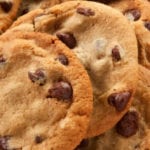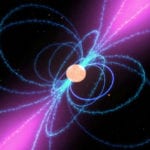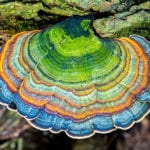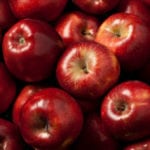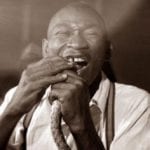 Weird Stuff
Weird Stuff  Weird Stuff
Weird Stuff  Our World
Our World 10 Ways Your Christmas Tree Is More Lit Than You Think
 Movies and TV
Movies and TV The 10 Coolest Stars to Set Sail on The Love Boat
 History
History 10 Things You Didn’t Know About the American National Anthem
 Technology
Technology Top 10 Everyday Tech Buzzwords That Hide a Darker Past
 Humans
Humans 10 Everyday Human Behaviors That Are Actually Survival Instincts
 Animals
Animals 10 Animals That Humiliated and Harmed Historical Leaders
 History
History 10 Most Influential Protests in Modern History
 Creepy
Creepy 10 More Representations of Death from Myth, Legend, and Folktale
 Technology
Technology 10 Scientific Breakthroughs of 2025 That’ll Change Everything
 Weird Stuff
Weird Stuff Ten Bizarre Facts About The Doge Meme
 Our World
Our World 10 Ways Your Christmas Tree Is More Lit Than You Think
 Movies and TV
Movies and TV The 10 Coolest Stars to Set Sail on The Love Boat
Who's Behind Listverse?

Jamie Frater
Head Editor
Jamie founded Listverse due to an insatiable desire to share fascinating, obscure, and bizarre facts. He has been a guest speaker on numerous national radio and television stations and is a five time published author.
More About Us History
History 10 Things You Didn’t Know About the American National Anthem
 Technology
Technology Top 10 Everyday Tech Buzzwords That Hide a Darker Past
 Humans
Humans 10 Everyday Human Behaviors That Are Actually Survival Instincts
 Animals
Animals 10 Animals That Humiliated and Harmed Historical Leaders
 History
History 10 Most Influential Protests in Modern History
 Creepy
Creepy 10 More Representations of Death from Myth, Legend, and Folktale
 Technology
Technology 10 Scientific Breakthroughs of 2025 That’ll Change Everything
Top 10 Bizarre Ways Foods Were Discovered
It is strange to think of food being discovered, but there must have been a first time that a human ever put a food in their mouth. It was a brave or desperate person who first saw an oyster and thought “Yup, I want to gobble that.” Sometimes the discovery of a food was so long in the past that its origins have become legendary. Sometimes though we know exactly when and how a food was found.
Here are ten of the origin stories of common foods and drinks.
Top 10 Disgusting Foods The Chinese Eat
10 Tea
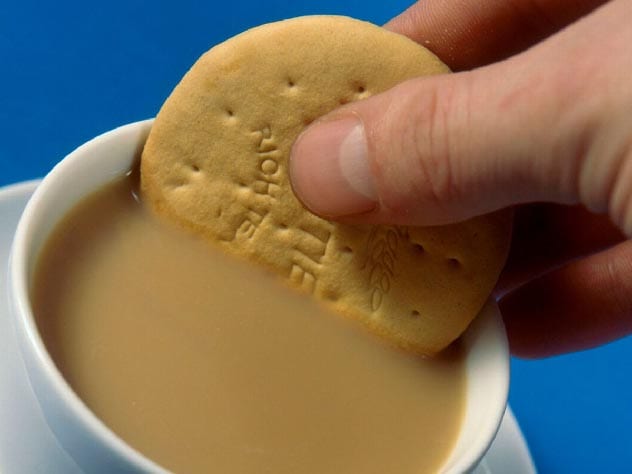
Tea is one of the most popular drinks in the world. Its caffeine content is relatively mild so it is at once both stimulating and calming without giving you the jitters. How did the leaves of the tea plant come to be so highly prized?
In one Chinese legend the properties of tea were discovered by the Emperor of China. It was in 2737 BC that the emperor Shen Nong found himself sitting under a tree. He happened to be boiling some water when a gust of wind wafted some leaves down into the bubbling pot. As they diffused in the water the delicate smell of tea filled the area. Shen Nong drank the first cup of tea on record. It was lucky there wasn’t a bird sitting in the tree or we might be drinking droppings today.
It seems more likely that tea was discovered as having medicinal properties at some point and incorporated into Chinese medicine before evolving into the modern drink. The Chinese legend is not the only story of its origin. In one Indian story a Buddhist known as Bhodidharma vowed to meditate for ten years without sleeping. When he fell asleep after nine years he was so angry he tore off his eyelids. When they struck the ground they transformed into tea plants – and tea became one way for monks to stave off sleep.[1]
9 Coffee
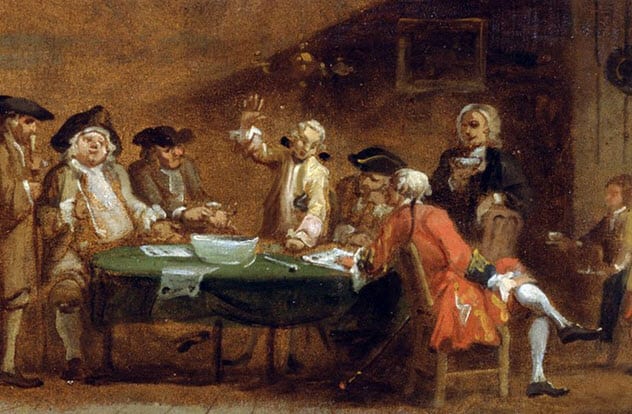
Given that caffeine is highly addictive it is understandable that tea and coffee have become staples in our daily lives. Coffee’s true origin is lost to the mists of time but the legends of how it was first discovered are pretty stimulating.
In one tale from Ethiopia it was a goatherd called Kaldi who first noticed the unique properties of coffee beans. He happened to be out with his goats when he noticed them eating berries from a certain plant and then getting frisky and leaping about. The goats also did sleep that night. When he told local monks about his discovery they found that coffee helped them stay up to perform their prayers late at night.
In an Islamic story it was an exile from Mecca who found himself starving in the desert. When he chewed on berries from the coffee tree his hunger went away but they were too bitter. So he roasted the beans but they became too hard. Next he boiled them to soften them but instead found the water converting into a delicious brew. Coffee the drink was born.[2]
8 Popsicles
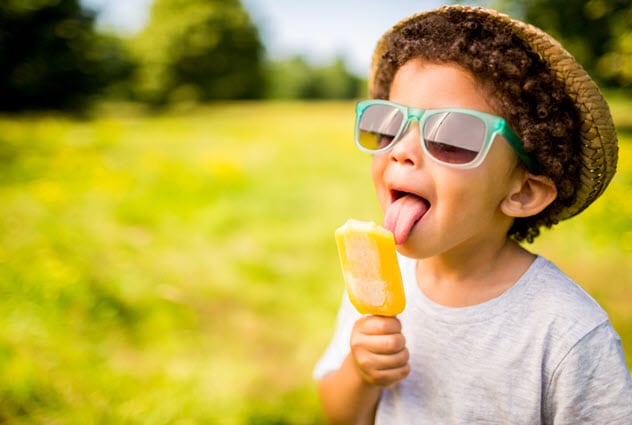
The Popsicle is one of the most basic pleasures of a really hot summer. It seems like a no-brainer of an idea. Take some colourful and delicious juice, shove a stick in it, and freeze. Surely these have existed since the dawn of time? In fact we know the exact moment they were first created.
It was in 1905 when a young boy called Frank Epperson decided to make some soda by mixing powdered drink and water with a wooden stick. He got distracted however and left his glass of unfinished drink in the back garden. When he returned the next morning the drink had frozen solid and the stirrer gave it a handy handle.
Epperson named his invention the Epsicle and even gained a patent on his invention that was a “frozen confection of attractive appearance, which can be conveniently consumed without contamination by contact with the hand and without the need for a plate, spoon, fork, or another implement.”
The name Epsicle didn’t win many fans however so it was rechristened as the Popsicle. When it failed to make Epperson much money he sold the idea to a company who added a second stick – making the snappable frozen treat we know today.[3]
7 Sweeteners
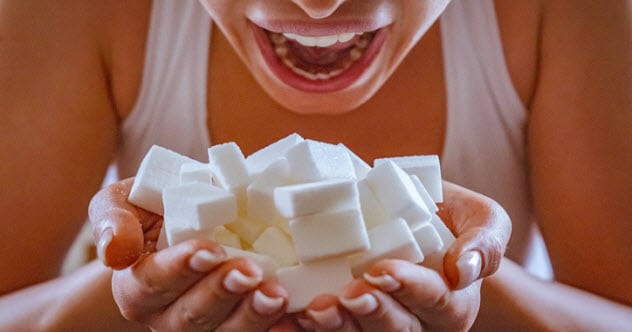
Sugar has been vilified recently as perhaps the worst food that anyone can eat. Before sugar was demonised it was sugar-replacing sweeteners that were thought to be pure evil. Today most sweeteners have been thoroughly tested by scientists and found to be safe. But it was a lack of lab safety that led to the creation of some sweeteners.
Aspartame was discovered when a scientist called James M. Schlatter was working on an anti-ulcer drug in his lab. Needing to turn a page on a book he was reading he licked his finger. This is generally not encouraged in most modern labs but Schlatter noticed that his finger was incredibly sweet.
Cyclamate is a now banned sweetener that first emerged in 1937 when Michael Sveda stopped his work on a fever drug to have a smoke in his lab – which was apparently something you could do in the 30s. Sveda found his cigarette was sweet and realised he may have discovered an artificial sweetener.[4]
6 Maple Syrup
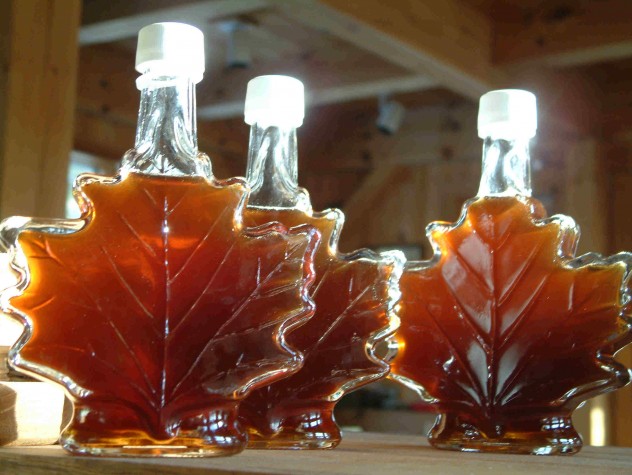
Generally we only think of trees as a source of food when we are thinking about their fruit. Maple syrup however is the product of humans essentially stabbing a tree and drinking its blood. How did humans figure out that maple trees have sweet juice inside them?
It is well known that the indigenous people of North America were producing maple syrup long before European settlers arrived. Maple syrup does not come out of the tree in the form we pour it onto our pancakes. The syrup starts as a watery fluid and must be boiled into a thick syrup. Indigenous people did not boil maple syrup though. They would leave maple sap out in a shallow vessel and when the water froze the syrup would be left behind.
According to one legend Prince Glooskap found that his people were slacking off their work because they were drinking syrup straight from a tree. To stop this happening again he added water to the trees and made the sweet fluid only rise up in the trees in spring. Some tribes name NenawBozhoo as the god who stopped maple syrup forming in its pure form in trees.
A more realistic origin for maple syrup comes from the tale of Moqua. When she was cooking some moose for her husband she ran out of water. Unable to locate any she used the sap from a maple tree. During the cooking it boiled down into a syrup – a syrup that apparently goes really well with moose meat.[5]
10 Disgusting Things Done to Food and Drink
5 The Sandwich
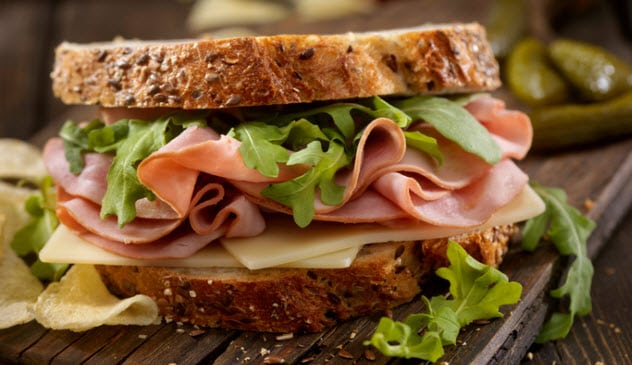
Sandwiches are one of the most popular ways of eating lunch. For hundreds or thousands of years bread has been the staple of many people’s diets. Most people would have got the majority of their calories from bread. A lunch would have been a loaf of bread and some other thing to give it a bit of flavour.
We can’t know who the first person was to cut their bread and put their meal between the slices but we do know who popularised it. John Montagu, 4th Earl of Sandwich, lived in the 18th century in a Britain that was heavily addicted to gambling. The aristocracy would spent their time at the gaming tables winning, or more often, losing fortunes. For some like the Earl of Sandwich even a moment away from the table was a moment lost. So instead of taking a break to eat a meal he ordered the cook to bring him something he could eat without getting up.
This turned out to be slices of bread with flavourful fillings between them. The bread stopped his hands getting greasy. You didn’t need a knife and fork. Gambling could continue. Whether this was the true origin of the sandwich is debated but for the Earl it was perhaps his most lasting contribution.[6]
4 Tofu
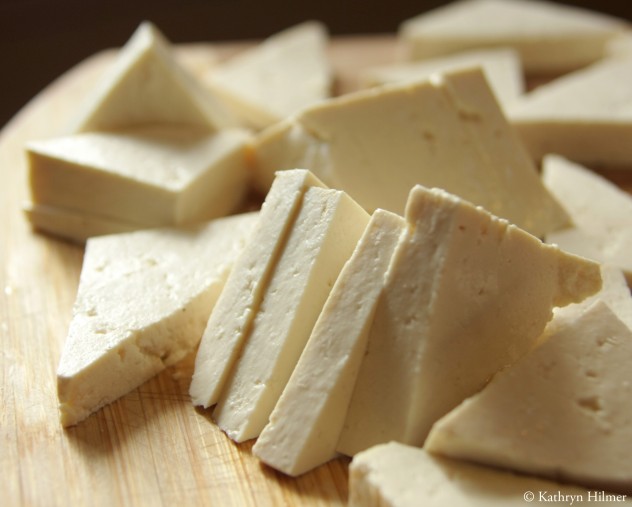
Tofu is a rather bland ingredient with quite the colourful origin. It has a long history that dates back at least 2000 years. At some point soy milk was mixed with something to make it coagulate into something resembling cheese. How this step was first made is a controversial subject.
The most basic theory is that impure sea salt was added to soy milk to flavour it. If there was sea weed or magnesium salts in the mix, it would make the soy milk curdle. This is entirely possible but not as interesting as the other legend of its origin.
According to one tale it was a Chinese prince of the Han dynasty called Liu An who first created tofu. Liu An was a great scholar and seems to have had a fondness for soy beans. One legend has him inventing soy milk for his grandmother when she found the beans too difficult to chew.
Apparently it was while Liu An was researching immortality and alchemy that he came up with the recipe for tofu. While most people would be happy to have invented a meat substitute Liu An was said to have actually come up with a recipe for immortality. One account see Liu An growing younger from eating tofu. He then sprouted wings and ascended to the heavens to live forever. That’s one way of encouraging people to eat tofu.[7]
3 Champagne
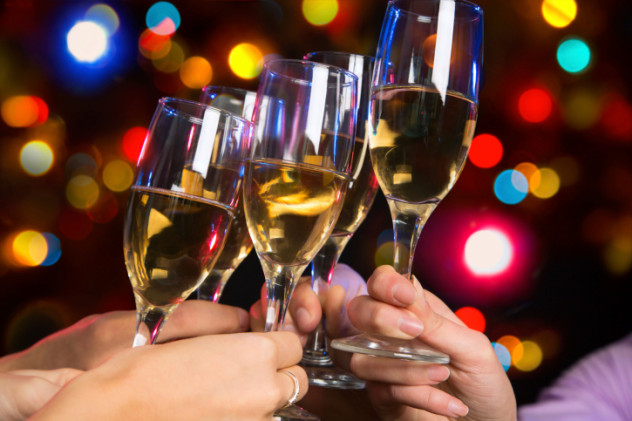
Famously champagne is only really champagne if it comes from the Champagne region of France, otherwise it is just sparkling disappointment. Considering the social cachet that comes with the name champagne it is easy to see how legends could spring up like the bubbles in a glass.
The vineyards of the Champagne region had been struggling to produce white wine from red grapes for generations until a Benedictine monk named Dom Pierre Perignon perfected a method. There was one problem though – his wine had bubbles in. According to legend the bubbles caused Perignon to exclaim to his brother monks “Come quickly, I am tasting the stars!”
In fact it seems that Dom Perignon spent the majority of his time trying to get rid of the bubbles in his wine. Another myth about champagne is that the shape of the champagne coupe was modelled after the breasts of Marie Antoinette, or Madame de Pompadour.
Perhaps the greatest myth about champagne is that it was the first sparkling wine. Anyone who has tried home brewing will know that you can often get unwanted bubbles in your bottles. At the very least there is evidence from 30 years before Dom Perignon’s miraculous invention that shows the English were creating sparkling wine on purpose.
“Our wine coopers of recent times use vast quantities of sugar and molasses to all sorts of wines to make them drink brisk and sparkling and to give them spirit.”[8]
2 Worcestershire Sauce
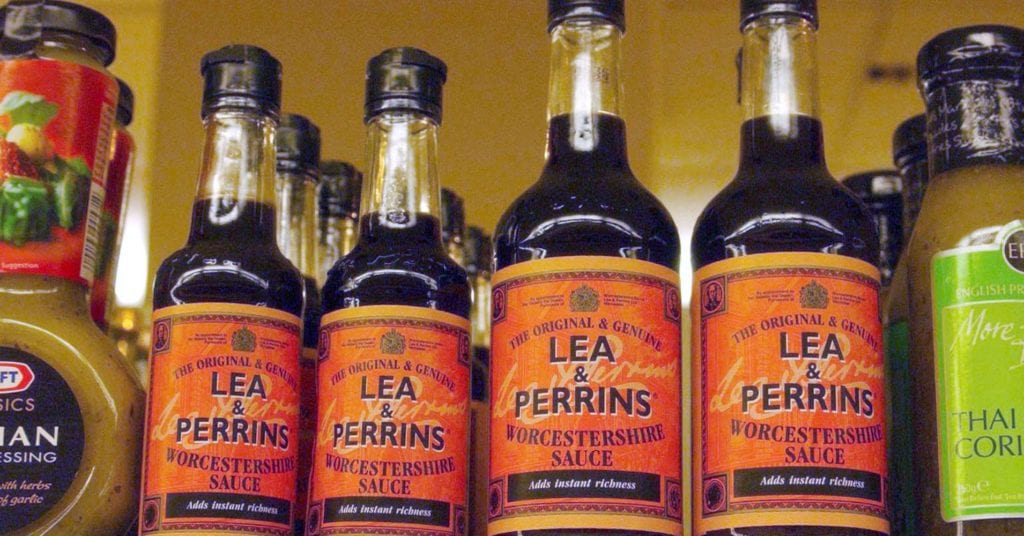
English food has a questionable reputation abroad and the origin story of Worcestershire Sauce is unlikely to change that. Worcestershire sauce is a somewhat pungent and strong sauce made from ingredients like anchovy, vinegar, onion, sugar, garlic, and spices. According to the Lea and Perrins company that produced the original Worcestershire sauce the first batch was as inedible as the description of the ingredients suggests.
Apparently Lord Sandys, an aristocrat who had been British governor of Bengal, returned to England with a passion for Indian flavours. He visited Lea and Perrins, a pair of chemists, to see if they could replicate the sauce he wanted. Their first try was so disagreeable that they threw it away. But the pair had made up two barrels of the stuff and only threw one away. The other stayed in their cellar for another few years.
When they came to clear some space for storage the pair saw the abandoned sauce and opened the lid. Doing what we all do when faced with an old, brown liquid they tasted it. And it was delicious. Worcestershire sauce is now found in cupboards up and down Britain.[9]
1 Cornflakes
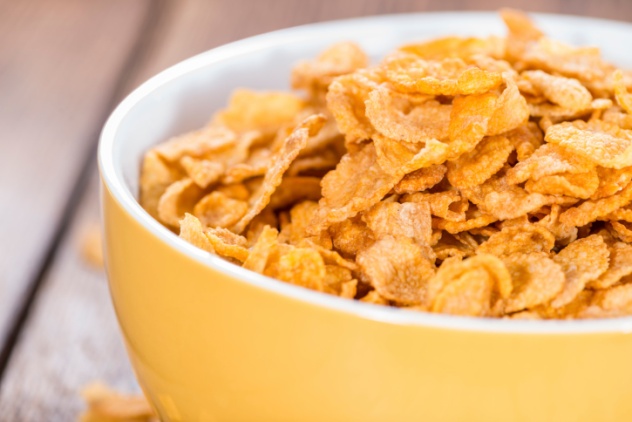
If you believe everything you read online then you no doubt already know that Kellogg’s Cornflakes were invented as part of a crusade against the evils of masturbation. Like most facts that appear on the internet things a lot more complex, and weirder, than they seem.
It is true that Dr John Harvey Kellogg, inventor of the cornflake, was a doctor, nutritionist, and religious man with some strange ideas. In his books he revealed that masturbation was the cause of a variety of illnesses from epilepsy, to fickleness, to bad posture. One of his cures for these problems was bland food and plenty of it. Other cures were inserting silver wires into the foreskin and dabbing the clitoris with carbolic acid. Cornflakes could have been part of his anti-masturbation campaign but they were never marketed as such.
The real story behind the creation of cornflakes is just as interesting without focusing on self-abuse however. The Kellogg brothers ran a sanatorium at Battle Creek. While they were searching for an easy to digest food for the patients they cooked some corn. When they got distracted the cooked corn was left out overnight and turned stale.
Being thrifty as well as health conscious the pair decided to cook the corn anyway by pressing them into thick biscuits. This didn’t work but it created thin flakes that the brothers loved the (lack of) taste of. The flavourless cereal proved a hit, though no data has been released on cornflakes effect on masturbation.[10]
Top 10 Disgusting Foods Westerners Eat
